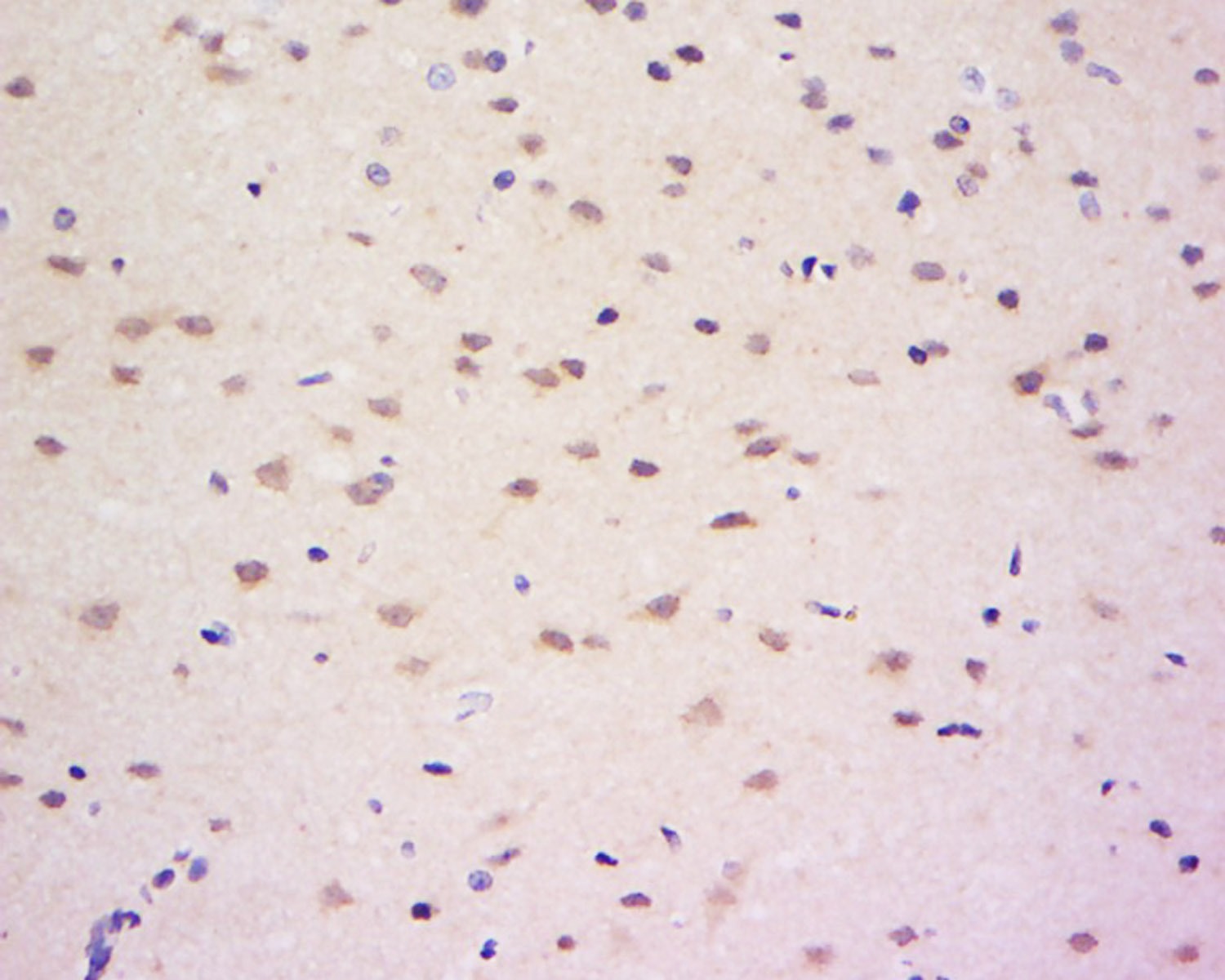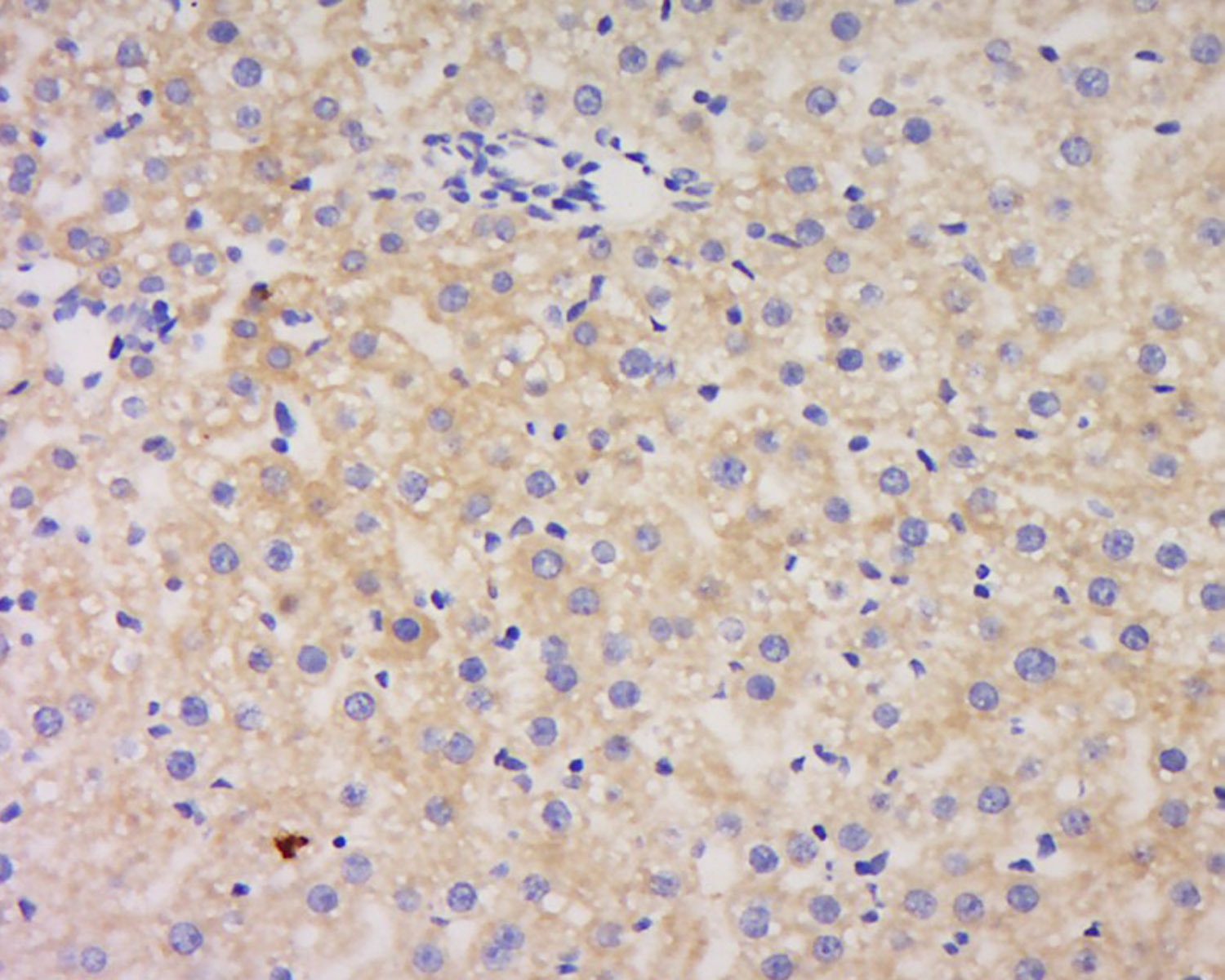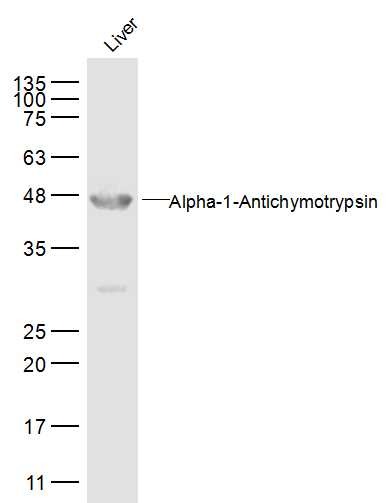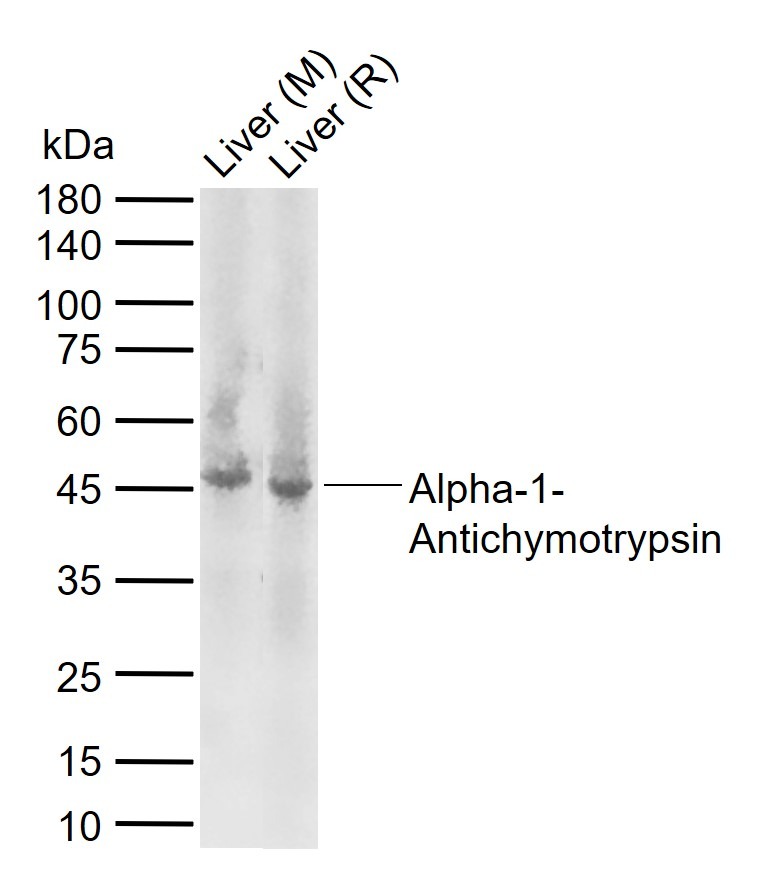Shopping Cart
Remove All Your shopping cart is currently empty
Your shopping cart is currently empty
Anti-Serpin A3 Polyclonal Antibody is a Rabbit antibody targeting Serpin A3. Anti-Serpin A3 Polyclonal Antibody can be used in IF,IHC-Fr,IHC-P,WB.
| Pack Size | Price | USA Warehouse | Global Warehouse | Quantity |
|---|---|---|---|---|
| 50 μL | $222 | 7-10 days | 7-10 days | |
| 100 μL | $373 | 7-10 days | 7-10 days | |
| 200 μL | $527 | 7-10 days | 7-10 days |
| Description | Anti-Serpin A3 Polyclonal Antibody is a Rabbit antibody targeting Serpin A3. Anti-Serpin A3 Polyclonal Antibody can be used in IF,IHC-Fr,IHC-P,WB. |
| Synonyms | SERPINA3, serpin peptidase inhibitor, clade A (α-1 antiproteinase, antitrypsin), member 3, serpin peptidase inhibitor, clade A (alpha-1 antiproteinase, antitrypsin), member 3, MGC88254, GIG25, GIG24, ACT, AACT |
| Ig Type | IgG |
| Reactivity | Human,Mouse,Rat |
| Verified Activity | 1. Tissue/cell: Rat brain tissue; 4% Paraformaldehyde-fixed and paraffin-embedded; Antigen retrieval: citrate buffer (0.01M, pH6.0), Boiling bathing for 15 min; Block endogenous peroxidase by 3% Hydrogen peroxide for 30 min; Blocking buffer (normal goat serum) at 37°C for 20 min; Incubation: Anti-Alpha-1-Antichymotrypsin Polyclonal Antibody, Unconjugated (TMAB-01679) 1:200, overnight at 4°C, followed by conjugation to the secondary antibody and DAb staining. 2. Tissue/cell: Mouse liver tissue; 4% Paraformaldehyde-fixed and paraffin-embedded; Antigen retrieval: citrate buffer (0.01M, pH6.0), Boiling bathing for 15 min; Block endogenous peroxidase by 3% Hydrogen peroxide for 30 min; Blocking buffer (normal goat serum) at 37°C for 20 min; Incubation: Anti-Alpha-1-Antichymotrypsin Polyclonal Antibody, Unconjugated (TMAB-01679) 1:200, overnight at 4°C, followed by conjugation to the secondary antibody and DAb staining. 3. Sample: Liver (Mouse) Lysate at 40 μg Primary: Anti-Alpha-1-Antichymotrypsin (TMAB-01679) at 1/500 dilution Secondary: IRDye800CW Goat Anti-Rabbit IgG at 1/20000 dilution Predicted band size: 45 kDa Observed band size: 47 kDa 4. Sample: Lane 1: Mouse Liver tissue lysates Lane 2: Rat Liver tissue lysates Primary: Anti-Alpha-1-Antichymotrypsin (TMAB-01679) at 1/1000 dilution Secondary: IRDye800CW Goat Anti-Rabbit IgG at 1/20000 dilution Predicted band size: 45 kDa Observed band size: 45 kDa     |
| Application | |
| Recommended Dose | WB: 1:500-2000; IHC-P: 1:100-500; IHC-Fr: 1:100-500; IF: 1:100-500 |
| Antibody Type | Polyclonal |
| Host Species | Rabbit |
| Subcellular Localization | Secreted. |
| Tissue Specificity | Plasma. Synthesized in the liver. Like the related alpha-1-antitrypsin, its concentration increases in the acute phase of inflammation or infection. Found in the amyloid plaques from the hippocampus of Alzheimer disease brains. |
| Construction | Polyclonal Antibody |
| Purification | Protein A purified |
| Appearance | Liquid |
| Formulation | 0.01M TBS (pH7.4) with 1% BSA, 0.02% Proclin300 and 50% Glycerol. |
| Concentration | 1 mg/mL |
| Research Background | Alpha 1-Antichymotrypsin, a member of the serine proteinase inhibitor (serpin) family, inhibits neutrophil proteinase cathepsin G and mast cell chymases, and protects the lower respiratory tract from damage by proteolytic enzymes. It contains a reactive centre loop, which interacts with cognate proteinases, resulting in loop cleavage and a major conformational change. Recently, alpha 1-antichymotrypsin has been identified as a major constituent of the neurofibrillary plaques associated with Alzheimers disease, and in vitro studies have shown that it enhances the rate of amyloid-fibril formation. These observations and recent genetic evidence suggest that alpha 1-antichymotrypsin is important in the pathogenesis of Alzheimers disease. |
| Immunogen | KLH conjugated synthetic peptide: human AACT |
| Antigen Species | Human |
| Gene Name | SERPINA3 |
| Gene ID | |
| Protein Name | alpha-1-antichymotrypsin |
| Uniprot ID | |
| Biology Area | Serum Proteins,Other proteases,Proteases |
| Function | Although its physiological function is unclear, it can inhibit neutrophil cathepsin G and mast cell chymase, both of which can convert angiotensin-1 to the active angiotensin-2. |
| Molecular Weight | Theoretical: 45 kDa. |
| Stability & Storage | Store at -20°C or -80°C for 12 months. Avoid repeated freeze-thaw cycles. |
| Transport | Shipping with blue ice. |
| Size | Quantity | Unit Price | Amount | Operation |
|---|

Copyright © 2015-2025 TargetMol Chemicals Inc. All Rights Reserved.